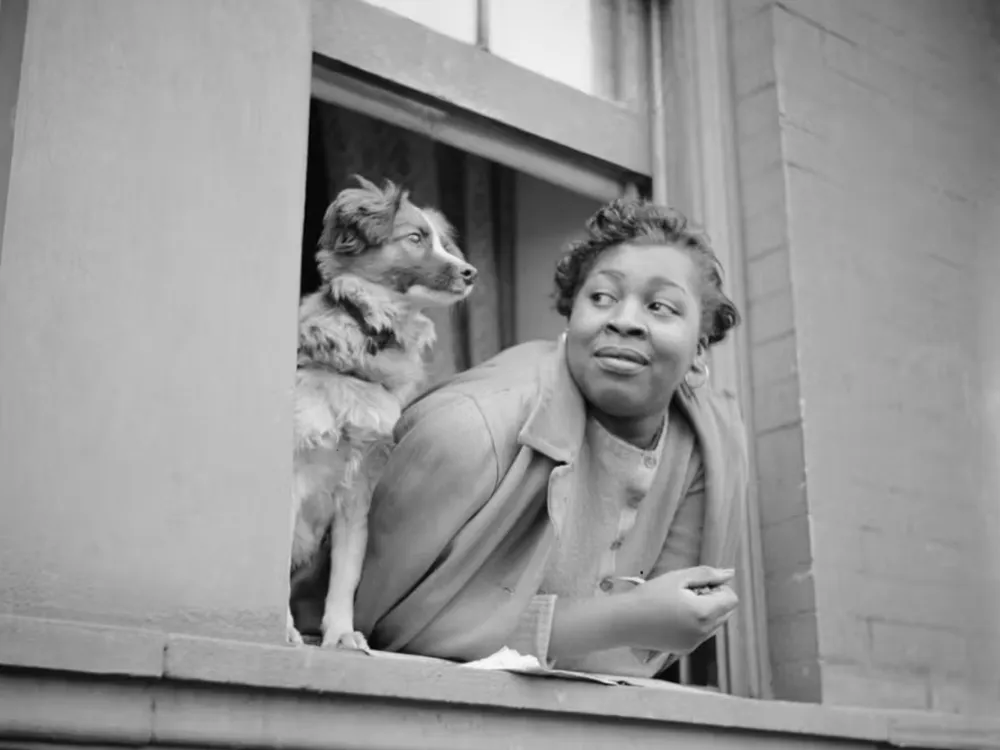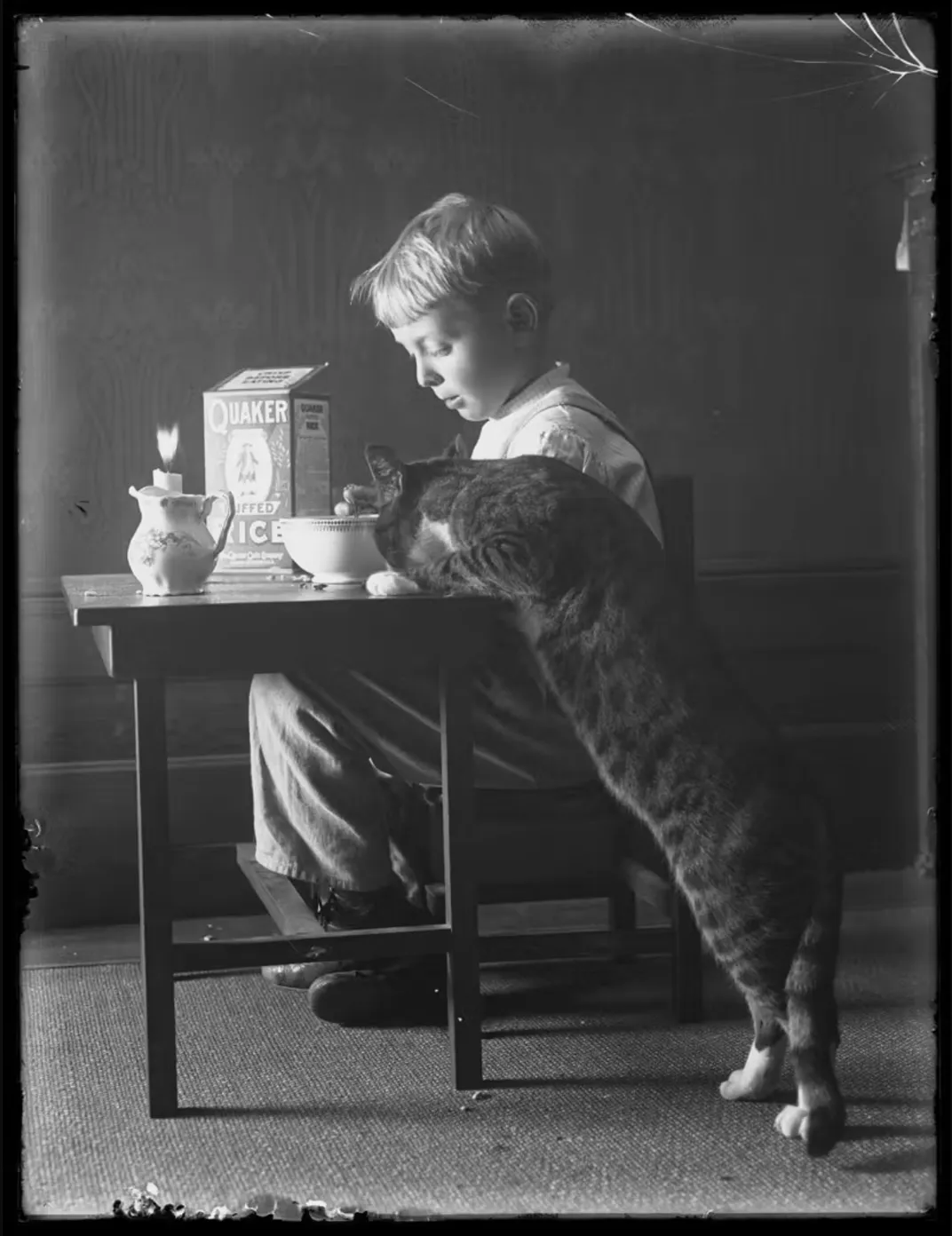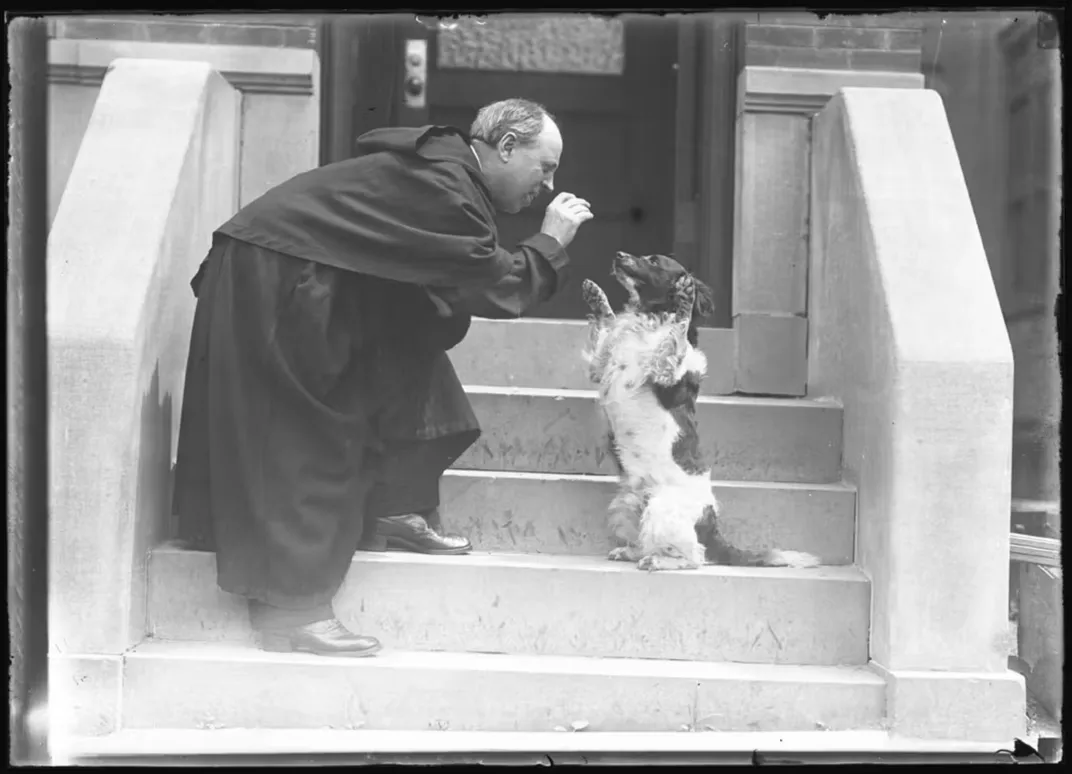See Images of New Yorkers and Their Pets Across Three Centuries
An upcoming exhibition will trace the history of the city’s domesticated dogs, cats, horses and other animals

Over the centuries, New York City’s swelling population has brought a proliferation of fauna: rats, pigeons—and puppies.
New York’s pet residents will soon be highlighted in a new exhibition by the New-York Historical Society. Debuting in Manhattan this fall, “Pets and the City” traces the history of animal domestication in New York, from the dogs trained by the Indigenous Lenape and Haudenosaunee peoples to the furry family members living in the city today.
“In New York City alone, it is estimated there are more than two million animal companions who reign over human hearts, homes and pocketbooks,” says Roberta J.M. Olson, the historical society’s curator of drawings, in a statement. “Given that, it’s fascinating to explore how these creatures rose to such a place of distinction.”

Before European colonists arrived on the island of Manahatta—now Manhattan—Indigenous groups lived in its “rolling hills and dense oak forests,” as Artnet’s Richard Whiddington writes. Animals had a spiritual significance for many Indigenous groups, which trained and kept dogs as companions and assistant hunters.
Hunting was a vital component of dogs’ proliferation in the New World. Canines have been helping humans catch and kill animals for millennia, and European settlers continued the tradition with dogs they brought from across the Atlantic. Per the historical society, artistic depictions of hunting dogs—including paper dolls—show how important they were to 18th-century settlers’ culture.
However, by the early 19th century, dogs were increasingly seen as members of the family. Per the statement, this shift occurred because “an increasingly urbanized environment fostered a greater reliance on domesticated animals to preserve a sense of attachment to the natural world.” The exhibition includes an abundance of family portraits featuring dogs and cats, which show how pets became “fixtures in domestic spheres,” writes Time Out’s Emma Pilkington.

A pair of photos taken by William Davis Hassler around 1912 and 1913 show his family accompanied by Reddy the Cat. Other images depict animals in more functional roles: a pony pulling a child’s carriage, for example, or one of the first seeing-eye dogs.
“Pets and the City” also examines New York City’s evolving animal rights movement, like the pivotal 1866 anti-cruelty law and the founding of the American Society for the Prevention of Cruelty to Animals.

“New York City residents have always loved their pets, and this exhibition reveals the important role that pets have played throughout the city’s history beyond providing companionship to their owners,” says Louise Mirrer, president and CEO of the historical society, in the statement. “I hope visitors come away from this exhibition with a deeper appreciation for the profound impact pets have had on our city’s culture and society and a more nuanced understanding of the complexities of our animals.”
“Pets and the City” will be on view at the New-York Historical Society from October 25, 2024, to April 27, 2025.

